Mergers and acquisitions (M&A) are a common strategy for businesses looking to expand their market share, diversify their offerings, or achieve operational synergies. However, they often lead to significant changes within the organization, making change management critical to ensure a smooth transition.
One of the unintended consequences of poorly managed change during M&A is the departure of high-performing employees. These employees are critical to maintaining continuity, driving growth, and achieving the intended goals of the M&A.
Understanding the reasons behind their departure and implementing effective change management strategies to retain them is an important part of a successful transition.
Reasons High-Performing Employees Leave After M&A
Uncertainty and Anxiety
- Lack of Communication: During a merger or acquisition, high-performing employees may feel left in the dark about the company’s future plans and their role within the organization. Effective change management involves clear, timely communication to address these concerns.
- Job Security Concerns: They may fear layoffs, restructuring, or diminished opportunities for advancement, underscoring the need for transparency in change management.
Cultural Misalignment
- Clash of Cultures: The merging of two distinct organizational cultures can lead to conflicts, making employees feel alienated. A robust change management approach can help align cultures and mitigate these issues.
- Loss of Identity: High performers who strongly identify with their original company may struggle to adapt to new values, processes, or leadership styles without proper guidance and support.
 Insight: The 5 Most Common Culture Clashes in M&A
Insight: The 5 Most Common Culture Clashes in M&A
Changes in Leadership and Direction
- Leadership Turnover: Key leaders leaving the organization can create instability and undermine employee confidence. Change management strategies should include retaining key leaders to provide stability.
- Shift in Vision: If the new company’s strategic goals or vision differ significantly, employees may feel disconnected from the organization’s purpose. Change management plays an important role in realigning employees with the new vision.
Disruption to Work Environment
- New Processes: Changes in workflows, tools, or reporting structures can disrupt productivity and morale. Effective change management involves providing training and resources to help employees adapt.
- Increased Workload: The transitional period often comes with increased responsibilities, leading to burnout. Change management efforts should focus on workload balancing and employee support.
Perceived Loss of Value
- Overlooked Contributions: In the chaos of integration, high performers may feel their achievements are not recognized or valued. Change management strategies should prioritize recognition and retention of talent.
- Inequitable Rewards: Concerns about unequal compensation or benefits between the merging entities can foster resentment, which change management can address through equitable policies.
 Insight: Avoiding Business Disruption During a Merger or Acquisition
Insight: Avoiding Business Disruption During a Merger or Acquisition
Strategies to Retain High-Performing Employees During M&A
Transparent Communication
- Frequent Updates: Keep employees informed about the progress and implications of the merger or acquisition through regular updates.
- Clear Vision: Share the long-term goals of the M&A and how employees fit into the future of the organization to reduce uncertainty.
Cultural Integration
- Conduct a Culture Assessment: Identify potential cultural differences and develop a plan to harmonize values and practices through structured change management.
- Involve Employees: Engage high performers in shaping the post-merger culture to foster ownership and alignment.
Leadership Stability
- Retain Key Leaders: Retain influential leaders who have strong relationships with high-performing employees.
- Provide Access: Ensure that employees have access to leaders who can address their concerns and provide reassurance during the transition.
Recognition and Rewards
- Acknowledge Contributions: Publicly recognize the efforts and achievements of high-performing employees, reinforcing their value within the organization.
- Equitable Benefits: Ensure compensation, benefits, and career development opportunities are consistent and competitive.
 Insight: Key Innovation Trends for Staying Ahead in Rapidly Changing Markets
Insight: Key Innovation Trends for Staying Ahead in Rapidly Changing Markets
Retention Programs
- Retention Bonuses: Offer financial incentives tied to performance and tenure to encourage employees to stay.
- Career Development: Provide training and development programs to support career progression within the new organization.
Supportive Transition Resources
- Onboarding Programs: Create tailored onboarding processes for employees adapting to new systems and processes as part of change management.
- Employee Assistance Programs (EAPs): Provide resources to support mental health and well-being during the transition.
Empower High Performers
- Involve in Decision-Making: Include high performers in key decisions to give them a sense of influence and importance, which is central to change management.
- Assign Meaningful Roles: Ensure that their roles align with their skills and aspirations within the new structure.
 Download the Retention Checklist for Top Performers in Mergers and Acquisitions
Download the Retention Checklist for Top Performers in Mergers and Acquisitions
Retain Talent
High-performing employees are the backbone of a successful merger or acquisition. Losing them can lead to operational setbacks, reduced morale, and difficulty achieving the strategic objectives of the M&A.
By incorporating effective change management practices, businesses can proactively address the concerns of high performers, foster loyalty, and ensure a smoother transition.
Transparency, recognition, and a commitment to cultural and professional alignment are key to retaining these valuable team members.

© 2025 SVA Consulting








 Insight: The 5 Most Common Culture Clashes in M&A
Insight: The 5 Most Common Culture Clashes in M&A Insight: Avoiding Business Disruption During a Merger or Acquisition
Insight: Avoiding Business Disruption During a Merger or Acquisition Insight: Key Innovation Trends for Staying Ahead in Rapidly Changing Markets
Insight: Key Innovation Trends for Staying Ahead in Rapidly Changing Markets Download the Retention Checklist for Top Performers in Mergers and Acquisitions
Download the Retention Checklist for Top Performers in Mergers and Acquisitions













